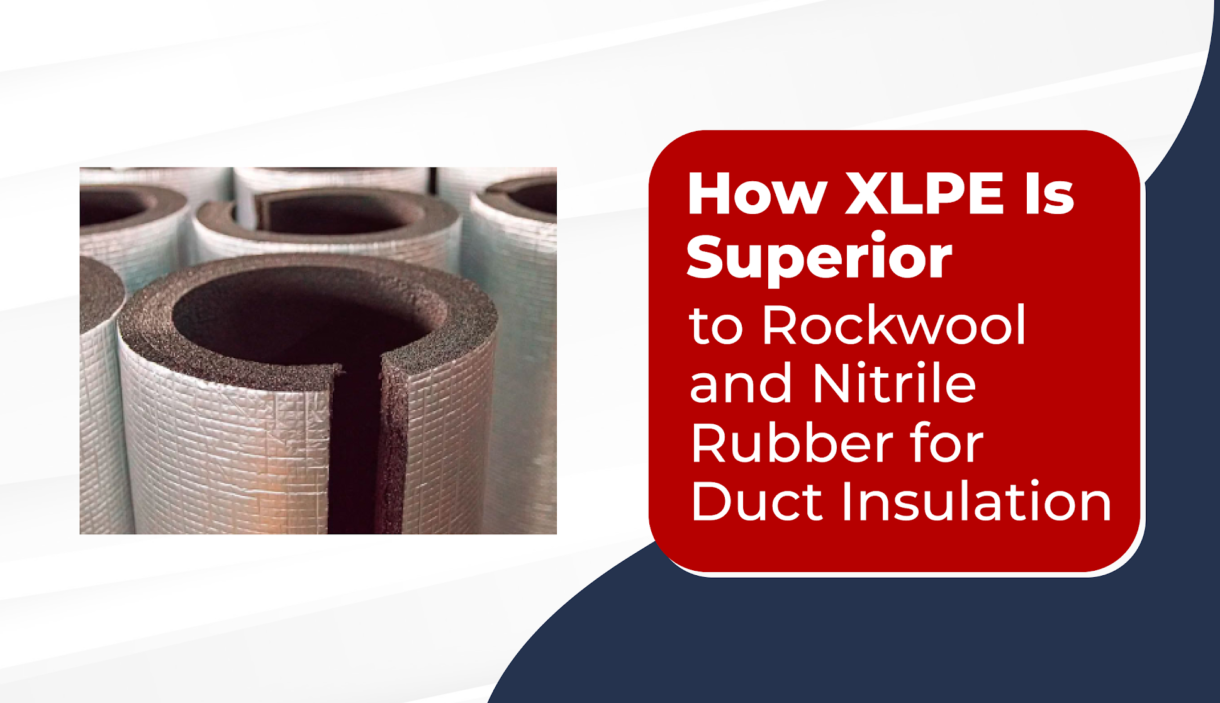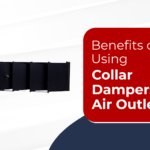How XLPE Is Superior to Rockwool and Nitrile Rubber for Duct Insulation
In modern HVAC systems, insulation is more than just a layer around ducts—it is key to energy efficiency, indoor air quality, and system longevity. The right insulation prevents heat loss, reduces condensation, lowers energy costs, and ensures smooth airflow throughout the building. Choosing the wrong material can lead to frequent maintenance, higher operational costs, and compromised performance.
Among popular options—Rockwool, Nitrile Rubber, and XLPE (Cross-Linked Polyethylene)—XLPE stands out for its combination of durability, performance, and ease of use. At Air Master, we provide premium XLPE insulation solutions to ensure your HVAC system operates efficiently, safely, and reliably.
1. Outstanding Thermal Performance
Maintaining consistent air temperature is crucial for comfort and energy efficiency.
- XLPE: Closed-cell structure with very low thermal conductivity (~0.034 W/mK), minimizing heat loss or gain.
- Rockwool: Fibrous structure can absorb moisture, reducing effectiveness over time.
- Nitrile Rubber: Effective initially but may degrade under prolonged heat or UV exposure.
Advantage: XLPE maintains stable thermal performance, reducing energy consumption and keeping indoor spaces comfortable.
2. Superior Moisture Resistance
Moisture can lead to mold growth, corrosion, and reduced insulation efficiency.
- XLPE: Fully waterproof and prevents condensation.
- Rockwool: Absorbs water in humid environments, lowering insulation efficiency.
- Nitrile Rubber: Moderately moisture-resistant but may crack over time.
Advantage: XLPE protects ductwork, reduces maintenance, and enhances indoor air quality.
3. Long-Lasting Durability
Durable insulation reduces maintenance and replacement costs.
- XLPE: Tear-resistant, flexible, and maintains performance for years.
- Rockwool: Fibers can compress or break under vibration or stress.
- Nitrile Rubber: Can become brittle or crack over time.
Advantage: XLPE offers long-term reliability and minimal maintenance.
4. Easy Installation
Efficient installation reduces labor costs and project timelines.
- XLPE: Lightweight, flexible, and easy to fit into complex duct layouts.
- Rockwool: Heavy, dusty, and difficult to handle safely.
- Nitrile Rubber: Flexible but less adaptable for irregular ducts.
Advantage: XLPE ensures faster, safer, and simpler installation.
5. Safety and Clean Finish
- XLPE: Smooth, non-fibrous, non-toxic, and fire-safe (low smoke, no fiber emission).
- Rockwool: Fibers can shed, affecting air quality if not sealed properly.
- Nitrile Rubber: Can emit odor or smoke under high heat.
Advantage: XLPE ensures a safe, clean, and professional finish for HVAC systems.
6. Cost-Effectiveness
Although the initial cost may be slightly higher, XLPE’s durability, energy efficiency, and low maintenance make it highly economical in the long term.
Advantage: Reduced energy bills, minimal replacements, and lower maintenance costs make XLPE a smart investment.
Conclusion
Selecting the right insulation material is critical for HVAC performance, safety, and longevity. XLPE outperforms Rockwool and Nitrile Rubber in thermal efficiency, moisture resistance, durability, ease of installation, and long-term cost-effectiveness.
By choosing Air Master’s XLPE insulation solutions, you can ensure your ducts remain efficient, safe, and reliable for years. Upgrade your HVAC system today with XLPE technology and enjoy better energy efficiency, lower maintenance costs, and consistent comfort across all spaces.



